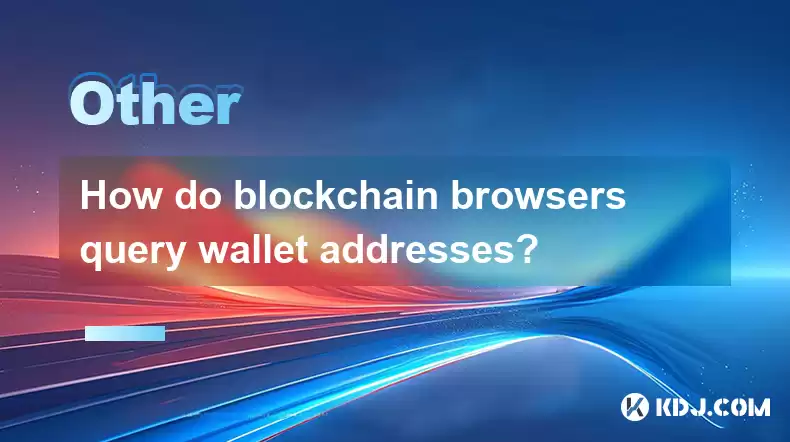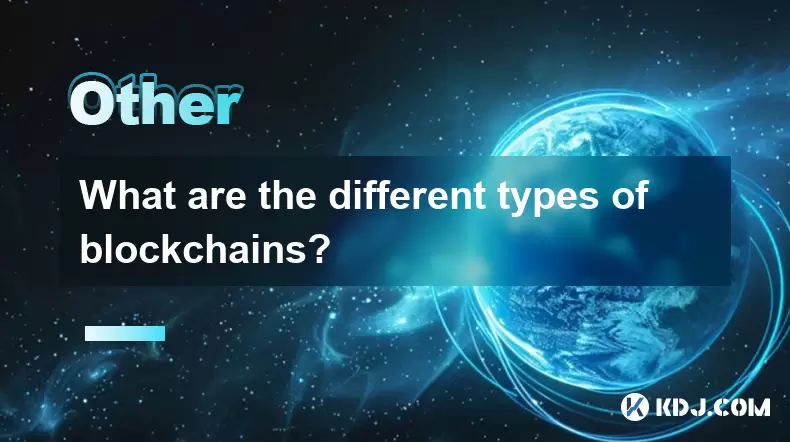-
 Bitcoin
Bitcoin $112400
-1.07% -
 Ethereum
Ethereum $3409
-3.27% -
 XRP
XRP $2.784
-6.60% -
 Tether USDt
Tether USDt $0.9997
-0.03% -
 BNB
BNB $739.3
-2.09% -
 Solana
Solana $158.0
-2.90% -
 USDC
USDC $0.9998
-0.02% -
 TRON
TRON $0.3213
-0.94% -
 Dogecoin
Dogecoin $0.1929
-5.01% -
 Cardano
Cardano $0.6974
-2.82% -
 Hyperliquid
Hyperliquid $36.69
-2.31% -
 Sui
Sui $3.327
-4.80% -
 Stellar
Stellar $0.3672
-5.18% -
 Chainlink
Chainlink $15.65
-3.07% -
 Bitcoin Cash
Bitcoin Cash $525.0
-1.68% -
 Hedera
Hedera $0.2291
-6.00% -
 Avalanche
Avalanche $20.91
-2.96% -
 Ethena USDe
Ethena USDe $1.000
0.00% -
 Toncoin
Toncoin $3.520
-1.12% -
 UNUS SED LEO
UNUS SED LEO $8.968
0.14% -
 Litecoin
Litecoin $105.7
0.26% -
 Shiba Inu
Shiba Inu $0.00001181
-1.79% -
 Polkadot
Polkadot $3.492
-2.08% -
 Uniswap
Uniswap $8.800
-3.10% -
 Dai
Dai $0.9999
-0.01% -
 Monero
Monero $289.9
-3.17% -
 Bitget Token
Bitget Token $4.243
-1.27% -
 Pepe
Pepe $0.00001006
-3.67% -
 Cronos
Cronos $0.1248
-5.68% -
 Aave
Aave $249.7
-2.50%
How do blockchain browsers query wallet addresses?
Blockchain explorers allow users to view transaction histories and wallet details by searching the blockchain's indexed database, ensuring transparency and verifiability.
Mar 29, 2025 at 05:21 pm

Understanding Blockchain Explorers and Wallet Address Queries
Blockchain browsers, often called blockchain explorers, are essential tools for interacting with and investigating blockchain networks. They provide a user-friendly interface to view transaction history, block information, and most importantly, the details associated with specific wallet addresses. Understanding how these explorers query and display this data is crucial for anyone involved in cryptocurrency. The process leverages the public and immutable nature of the blockchain.
The Mechanics of Querying a Wallet Address
Blockchain explorers don't directly "query" a wallet address in the sense of asking a central server. Instead, they utilize the blockchain's inherent structure. Every transaction involving a specific wallet address is recorded on the blockchain as a block. The explorer searches through the chain of blocks, looking for entries that involve the inputted address. This is a computationally intensive process, but explorers optimize it through indexing and database techniques.
The process typically involves these steps:
- The user inputs a wallet address into the explorer's search bar.
- The explorer's backend software uses this address to search its indexed database. This database contains a record of all transactions and their associated addresses.
- The explorer retrieves all transactions linked to that specific address, both incoming (receiving funds) and outgoing (sending funds).
- The explorer then displays this information in a user-friendly format, usually including transaction IDs, timestamps, amounts, and involved addresses.
Data Retrieval and Display
The information displayed by the blockchain explorer is drawn directly from the blockchain itself. This ensures transparency and verifiability. No intermediary is involved in the data retrieval process. The explorer simply acts as a user-friendly interface to access and interpret the data already present on the decentralized network. The data displayed is typically organized chronologically, allowing users to easily track the history of the wallet's activity.
Each transaction shown will usually include details like:
- Transaction Hash (ID): A unique identifier for each transaction.
- Timestamp: The time the transaction was added to the blockchain.
- Sender Address: The address that sent the cryptocurrency.
- Receiver Address: The address that received the cryptocurrency.
- Amount: The quantity of cryptocurrency transferred.
- Transaction Fee: The fee paid to miners for processing the transaction.
Data Privacy and Security Considerations
While blockchain explorers provide valuable insights, it's important to understand their limitations regarding privacy. Remember that blockchain transactions are publicly visible. Anyone with the wallet address can use a blockchain explorer to view its transaction history. This transparency is a core tenet of blockchain technology. However, it's important to remember that the address itself doesn't directly reveal the identity of the owner. Linking an address to a real-world identity often requires additional information or investigative techniques.
The security of blockchain explorers themselves varies. Reputable explorers employ robust security measures to protect their data and infrastructure. However, it's crucial to only use trusted and well-established explorers to avoid potential scams or malicious actors.
Different Blockchain Browsers, Different Capabilities
Different blockchains utilize different technologies and have varying levels of detail available through their respective explorers. Some explorers offer more advanced features like visualizing transaction graphs, identifying large holders, or providing historical price data alongside transaction details. The specific functionality available will depend on the capabilities of the explorer and the blockchain it serves. Choosing the right explorer depends on the specific blockchain you're investigating.
Advanced Querying Techniques
Beyond basic address lookups, many blockchain explorers offer advanced search options. These can include:
- Searching by transaction hash: This allows you to quickly find a specific transaction using its unique identifier.
- Searching by block height: This lets you explore all transactions within a particular block.
- Filtering by date range: This allows you to narrow down your search to a specific time period.
- Searching for specific keywords within transaction data (if available): Some explorers might allow you to search for specific terms within the transaction metadata.
The Role of Indexing in Efficient Queries
The efficiency of a blockchain explorer is heavily reliant on its indexing system. Indexing involves creating a searchable database of transaction data, allowing for rapid retrieval of information. Without efficient indexing, searching the entire blockchain for a specific address would be extremely slow and impractical. Therefore, the performance and speed of an explorer are directly related to the quality of its indexing.
Limitations of Blockchain Explorers
It's important to acknowledge that blockchain explorers have certain limitations. They primarily focus on providing transaction data. They may not offer insights into the underlying reasons behind transactions, the identities of the wallet owners, or the context of those transactions. The data is simply a record of the transactions themselves. Further investigation may be needed to understand the broader implications of those transactions.
Frequently Asked Questions
Q: Are blockchain explorers safe to use?
A: Reputable blockchain explorers from trusted sources are generally safe. However, always be cautious and avoid using lesser-known or suspicious explorers.
Q: Can I use a blockchain explorer to track my own wallet?
A: Yes, you can use a blockchain explorer to view your own wallet's transaction history. Just input your wallet address into the search bar.
Q: Is all the information on a blockchain explorer completely accurate?
A: The data displayed on a blockchain explorer is generally considered accurate, as it's directly sourced from the blockchain. However, there's always a small possibility of errors or discrepancies, especially in cases of blockchain forks or network issues.
Q: Can I find out who owns a specific wallet address using a blockchain explorer?
A: No, a blockchain explorer only shows transaction data. It does not reveal the real-world identity of the wallet owner. Linking an address to a person requires additional information and often involves investigative techniques beyond the capabilities of a blockchain explorer.
Q: How often is the data on a blockchain explorer updated?
A: The update frequency varies depending on the explorer and the blockchain it supports. Most reputable explorers update their data relatively frequently, often within minutes of a new block being added to the blockchain.
Disclaimer:info@kdj.com
The information provided is not trading advice. kdj.com does not assume any responsibility for any investments made based on the information provided in this article. Cryptocurrencies are highly volatile and it is highly recommended that you invest with caution after thorough research!
If you believe that the content used on this website infringes your copyright, please contact us immediately (info@kdj.com) and we will delete it promptly.
- Grayscale, Altcoin Trust, and Mid-Cap Mania: What's the Deal?
- 2025-08-03 08:50:16
- XRP, ADA, and the Altcoin Evolution: What's Hot and What's Next
- 2025-08-03 08:30:16
- Altcoins, Bitcoin, and Inflows: Decoding the Crypto Current
- 2025-08-03 09:30:16
- HBAR Price Check: Will Monthly Gains Hold at This Resistance Level?
- 2025-08-03 08:30:16
- BTC Price August 2025: Will Bitcoin Make History?
- 2025-08-03 09:50:16
- Bitcoin, Cryptos, and Retirees: A New Era of Investment?
- 2025-08-03 08:50:16
Related knowledge

What is the difference between on-chain and off-chain transactions?
Aug 02,2025 at 04:22pm
Understanding On-Chain TransactionsOn-chain transactions refer to digital asset transfers that are recorded directly on a blockchain ledger. These tra...

What is the double-spending problem and how does blockchain prevent it?
Aug 02,2025 at 01:07pm
Understanding the Double-Spending ProblemThe double-spending problem is a fundamental challenge in digital currency systems where the same digital tok...

What is the difference between a blockchain and a database?
Aug 01,2025 at 09:36pm
Understanding the Core Structure of a BlockchainA blockchain is a decentralized digital ledger that records data in a series of immutable blocks linke...

How does blockchain handle scalability?
Aug 02,2025 at 02:58pm
Understanding Blockchain Scalability ChallengesBlockchain scalability refers to a network's ability to handle an increasing volume of transactions wit...

What are the different types of blockchains?
Aug 03,2025 at 03:01am
Public Blockchains: Open and Decentralized NetworksPublic blockchains are the most widely recognized type of blockchain, characterized by their open a...

What is a hash in a blockchain?
Aug 02,2025 at 05:28am
Understanding the Concept of Hash in BlockchainA hash in the context of blockchain technology refers to a unique digital fingerprint generated by a cr...

What is the difference between on-chain and off-chain transactions?
Aug 02,2025 at 04:22pm
Understanding On-Chain TransactionsOn-chain transactions refer to digital asset transfers that are recorded directly on a blockchain ledger. These tra...

What is the double-spending problem and how does blockchain prevent it?
Aug 02,2025 at 01:07pm
Understanding the Double-Spending ProblemThe double-spending problem is a fundamental challenge in digital currency systems where the same digital tok...

What is the difference between a blockchain and a database?
Aug 01,2025 at 09:36pm
Understanding the Core Structure of a BlockchainA blockchain is a decentralized digital ledger that records data in a series of immutable blocks linke...

How does blockchain handle scalability?
Aug 02,2025 at 02:58pm
Understanding Blockchain Scalability ChallengesBlockchain scalability refers to a network's ability to handle an increasing volume of transactions wit...

What are the different types of blockchains?
Aug 03,2025 at 03:01am
Public Blockchains: Open and Decentralized NetworksPublic blockchains are the most widely recognized type of blockchain, characterized by their open a...

What is a hash in a blockchain?
Aug 02,2025 at 05:28am
Understanding the Concept of Hash in BlockchainA hash in the context of blockchain technology refers to a unique digital fingerprint generated by a cr...
See all articles

























































































